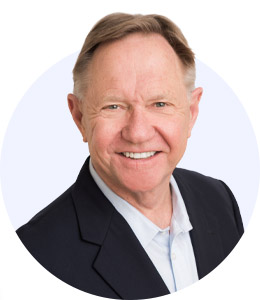In the first book I authored, Hardwiring Excellence, I used the metaphor of a flywheel to describe how consistent, values-driven actions create momentum in an organization. The idea of the flywheel initially came from author Jim Collins. A flywheel takes effort to start moving; however, once it gets going, the flywheel turns with less effort. The flywheel I outlined in my work has purpose, worthwhile work, and making a difference at the core.
Leaders play a key role in helping those they lead understand the difference they make. When someone has a job, their employer and leader have determined that the role is vital. Each person makes a difference.
At times, people may not realize their impact or may underestimate it. You might hear this when someone who is complimented replies, “It was nothing.” It is important to not let a person downplay their impact.
There are times when one’s impact is apparent—like the first responder on the scene of an accident who takes steps to save a life. Yet while that individual played a key role, it was a team effort. For example: the taxpayers who fund the emergency services…the mechanics who keep the vehicle running…the people who make sure the equipment on the vehicle is operational. Other team players include the person who called in the accident…the dispatcher helping people get to the scene…the citizens who stopped to assist the person until the first responders could arrive. Go further back and you’ll realize the person who hired the first responder and those who trained him also played a part in saving a life.
When I was president of Baptist Hospital in Pensacola in the late 1990s, we had a location where aluminum could be dropped off. It was then crushed and turned in for money. One hot July day, I stopped at the area and spoke with a person loading the aluminum to be crushed. I thanked him for taking care of patients. I pointed to the hospital and shared that the dollars he was creating were used to help patients receive care.
Consider the server in a restaurant who provides great service. The customers enjoy their experience and tell others. This creates more customers, which creates a more stable work environment for all. Another example is the workers who line up where plane passengers exit with wheelchairs, welcoming each passenger to the city. I was in an airport, and this was being done. The response from the passengers was so positive. Everyone can make a difference.
When Mr. Rogers was accepting an Academy Award, he had everyone take ten seconds to think of someone who had made or was making a difference in their lives. When I ask this question in presentations, I remind the audience that someone in the room is thinking of them.
A couple of tips:
- Take time to think about and write down the role you play and the difference it makes.
- Spend time with everyone you lead. Discuss their role and connect the dots on its purpose and the fact that it is worthwhile and makes a difference.
To those reading: You also serve a purpose and do worthwhile work. Never underestimate the difference you make.







